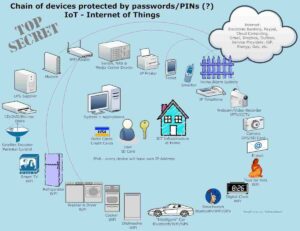In today’s data-driven landscape, Data Automation Tools have become indispensable. These sophisticated solutions facilitate the collection, transformation, storage, and analysis of data without the need for manual intervention. Automating these processes enhances efficiency, accuracy, and overall organizational performance. This article delves into the intricacies of Data Automation Tools, exploring their functionalities, use cases, and some of the best tools available.
What Are Data Automation Tools?
Data automation tools are software platforms designed to manage data workflows autonomously. They streamline data collection, transformation, storage, and analysis processes, thereby minimizing human error and boosting productivity. These tools can automate analytics, predict user behavior, flag inconsistent data, and transform erroneous data as it traverses the pipeline.
Data Automation Tool Use Cases
Data automation tools have diverse applications across various industries, facilitating numerous automated data processing workflows. Here are some everyday use cases:
Supply Chain Management and Optimization
In supply chain management, automation tools streamline tasks ranging from invoice payments to order processing. By reducing human error, these tools prevent duplicated orders or data entry mistakes, ensuring a smooth and efficient supply chain.
Automated Data Backup and Recovery
With the ever-increasing volume of data to be stored and protected, automated solutions ensure that backups are performed frequently and thoroughly without human intervention. This guarantees data security and availability in case of a system failure or data loss.
Email Campaign Optimization
Marketing automation tools analyze campaign results and predict optimal sending times. This allows email campaigns to be scheduled automatically, maximizing engagement and effectiveness without requiring constant manual adjustments.
Fraud Detection and Protection
Automation tools are instrumental in analyzing vast transaction data for banks, retailers, and card issuers. They identify patterns indicative of fraudulent activity, flagging suspicious transactions before they are processed, thereby enhancing security and reducing fraud-related losses.
Chatbot and Customer Support Automation
Data automation tools empower chatbots to provide round-the-clock customer support. These tools can reduce the need for live agents while improving customer satisfaction metrics, such as Net Promoter Scores (NPS).
Top Data Automation Tools
Selecting the right data automation tools depends on your organization’s specific needs. Below are four essential types of data automation tools:
Data Collection
Efficient data collection is critical given the myriad of customer touchpoints, data sources, and types organizations must manage. Automation simplifies the creation of ETL pipelines, pre-built integrations, event streaming, and batch processing.
Customer Data Platforms (CDPs)
Segments are designed to help organizations build and scale their data infrastructure. They offer over 450 pre-built connectors, allowing businesses to create custom sources and destinations with minimal coding. Segment can process 400,000 events per second, unify customer data into identity-resolved profiles, and synchronize these profiles with business data warehouses for further enrichment.
Data Quality and Cleansing
Ensuring data quality and consistency is another area where automation proves invaluable. Tools like Protocols automate data governance, adhering to a company’s tracking plan and flagging erroneous data for review. Such tools can also correct insufficient data as it moves through the pipeline, maintaining high data integrity.
Workflow Automation
Zapier has established itself as a leader in simplifying complex workflows. Its drag-and-drop interface allows users to create unlimited “if this happens, do that” triggers across various data types and applications. Supporting over 500 apps, Zapier enables seamless integration and automation of diverse workflows.
Data Analysis & Business Intelligence
Looker stands out with its proprietary language, LookML, an enhanced version of SQL. LookML enables users to reuse or build upon measures, creating custom metrics and visualizations. This empowers organizations to derive deeper insights and foster data-driven decision-making.
Segment, An All-in-One Data Automation Solution
Segment offers comprehensive data automation solutions, catering to tens of thousands of companies. It connects to any data source or destination, ensuring data quality at scale through automatic quality assurance checks. The Segment’s capabilities include:
- Automatic data classification based on risk levels.
- Data masking to protect personally identifiable information.
- Pairing artificial intelligence with first-party data for predictive modeling.
Predictive Analytics with Segment
Segment leverages AI to provide out-of-the-box predictive models, enhancing customer profiles with anticipatory insights. This allows teams to forecast customer behaviors and deliver superior customer experiences.
Segment, Leading the Charge in Data Collection and Integration
Segment’s prowess lies in its ability to collect and integrate data seamlessly across multiple platforms. It offers over 450 pre-built connectors that facilitate data collection from various sources. Segment’s infrastructure is designed to handle massive data volumes, processing up to 400,000 events per second. This capability ensures that organizations can scale their data operations effortlessly. Furthermore, Segment’s robust data governance framework guarantees that data quality is maintained, with automatic QA checks and real-time data correction mechanisms in place.
Protocols, Ensuring Data Quality and Governance
Protocols excel in automating data quality and governance processes. This tool ensures the tracked data adheres strictly to the organization’s tracking plan. Any deviations or anomalies are promptly flagged for review, preventing insufficient data from contaminating downstream systems. Protocols also offer real-time data correction, allowing organizations to maintain high data integrity throughout the data lifecycle. This level of oversight is crucial for organizations that rely on accurate data for decision-making and operational efficiency.
Zapier, Simplifying Workflow Automation
Zapier is famous for its user-friendly interface and powerful automation capabilities. It allows users to create custom workflows using a simple drag-& -drop interface, eliminating the need for complex coding. Zapier supports over 500 apps, enabling seamless integration and automation of various business processes. This flexibility makes it an ideal tool for organizations to streamline operations and improve efficiency through automation. Zapier’s ability to automate repetitive tasks frees up valuable time for employees, permitting them to focus on more strategic activities.
Looker, Advanced Data Analysis, and Business Intelligence
Looker’s standout feature is its proprietary language, LookML, which enhances SQL’s capabilities. LookML allows users to define custom metrics and create sophisticated data visualizations, facilitating deeper insights and data-driven decision-making. Looker integrates seamlessly with various data sources, providing an overarching complete view of the organization’s data landscape. This tool is precious for organizations that require advanced data analysis capabilities to stay competitive in today’s data-driven environment.
The Future of Data Automation
As technology continues to advance, the future of data automation looks promising. Emerging Tech similar to artificial intelligence, machine learning, & quantum computing are poised to transform the field. These advancements will enable data automation tools to handle even more complex tasks, providing deeper insights and more accurate predictions. Organizations that stay behind these trends will be well-positioned to leverage the complete possible of their data, driving innovation & maintaining a competitive edge in the market.
Integration with Emerging Technologies
Integrating data automation tools with emerging technologies like IoT and blockchain is set to unlock new possibilities. IoT devices cause vast amounts of data to be processed and analyzed in real time. Data automation tools can streamline this process, ensuring organizations can derive actionable insights from their IoT data. Similarly, blockchain technology offers enhanced security and transparency, making it an ideal complement to data automation tools in sectors where data integrity and trust are paramount.
Enhancing Predictive Analytics
Predictive analytics is a crucial area where data automation tools are making significant strides. By leveraging advanced algorithms & machine learning models, these tools can analyze historical & real-time data to predict future trends and behaviors. This capability allows organizations to make proactive decisions, mitigate risks, and capitalize on emerging opportunities. Data automation tools will become more integral to strategic planning and decision-making as predictive analytics evolves.
Conclusion
Data automation tools have transformed the way organizations manage and utilize data. These tools enhance efficiency and accuracy across the board by automating critical processes such as data collection, quality assurance, workflow management, and data analysis. As technology keeps evolving, the capabilities of Data Automation Tools will expand, offering even greater value to organizations. By staying abreast of these advancements & adopting the right tools, organizations can tackle their data’s full potential, driving innovation and achieving operational excellence in the digital age.








